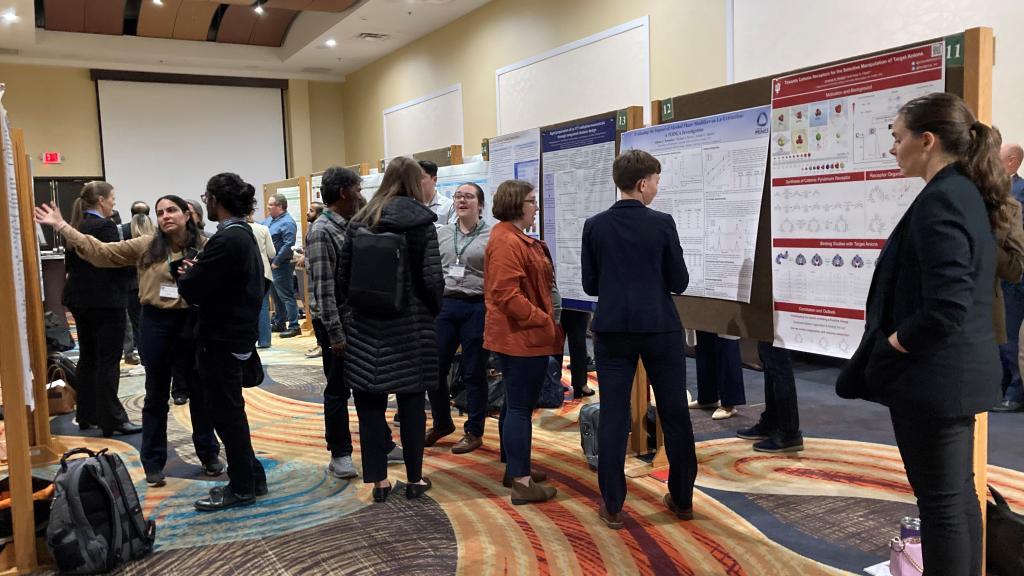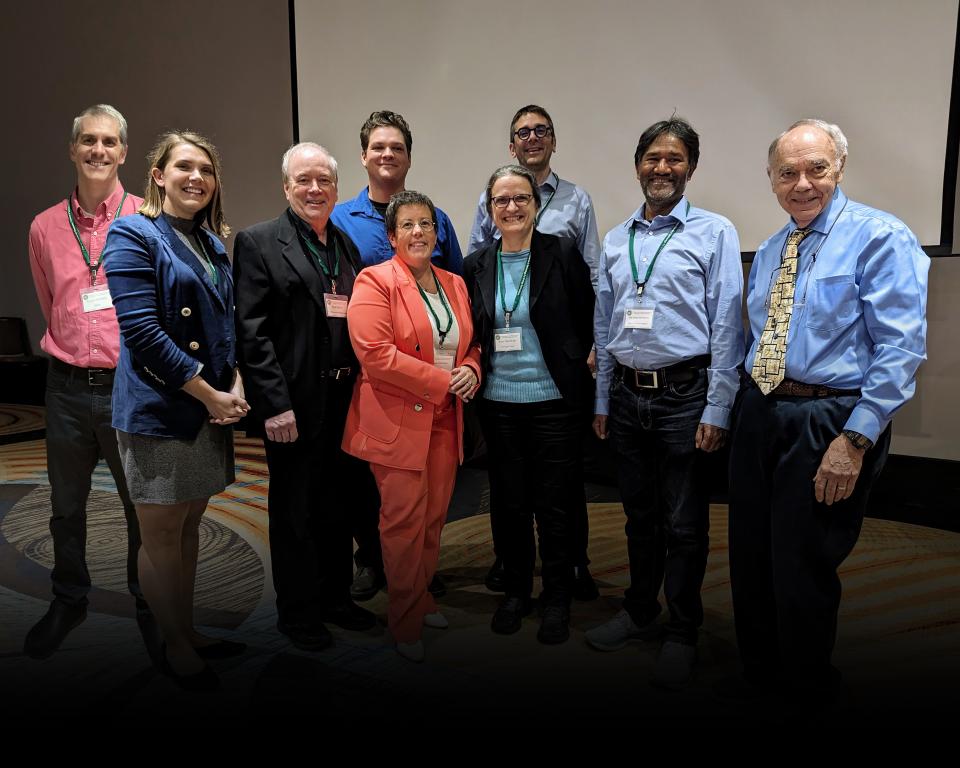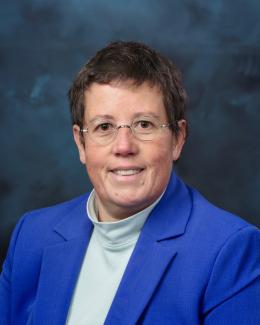
For the first time in five years, Oak Ridge National Laboratory hosted a symposium that had been a tradition since 1979.
The 21st Symposium on Separation Science and Technology for Energy Applications, Oct. 23-26 at the Embassy Suites by Hilton West in Knoxville, attracted 109 researchers, including some from Austria and the Czech Republic. Besides attending many technical sessions, they had the opportunity to tour the Graphite Reactor, High Flux Isotope Reactor and both supercomputers at ORNL.
“We had a great turnout, considering that we had a five-year hiatus during which some regular attendees retired or changed careers,” said Lætitia Delmau of ORNL’s Isotope Science and Engineering Directorate, who chaired the symposium. “It was so fine to see new faces who I’m sure will be part of the conference again. The feedback was very positive, which quickly allowed me to forget how nervous I was in the weeks and days before the conference.”
The symposium had been held every two years, but the one scheduled for 2020 was canceled because of the COVID-19 pandemic. After previous symposium chair Dave DePaoli retired in 2022, radiochemist Delmau – who attended her first symposium in 1995, when she was a graduate student in France − advocated for relaunching it and volunteered to be general chair. She aimed to have the conference in late October, its traditional timeframe, so that visitors could enjoy East Tennessee’s fall foliage.
The original organizers founded the symposium to develop Separation Science and Technology as a recognized area for integrated research. This year’s symposium included nine technical sessions, 49 talks on separation topics, and 35 posters. The poster session featured a best poster contest, sponsored by the American Chemical Society’s Industrial and Engineering Chemistry Division and its East Tennessee Local Section, open exclusively to undergraduate and graduate students. Winners were Amanda Morgan, graduate student at Indiana University; Nicodemus Klemperer, undergraduate student at the University of Louisville (Kentucky); and Eric Agyei, graduate student, Tennessee Technological University.

All presenters were encouraged to write a full paper that will be published in a special issue of the Journal of Separation Science and Technology.
Delmau was pleased by the diversity of separation methods and applications presented during the conference. A broad audience engaged in active discussions on a variety of fields, including membrane extraction, filtration, precipitation, solvent extraction and ion exchange.
“Separations are at the essence of any purification method, and the needs are endless, from the mining industry to the development of pharmaceuticals,” Delmau said.
Delmau’s co-chair for the symposium was Santa Jansone-Popova of the Physical Sciences Directorate; retiree Ken Nash served as co-chair emeritus. Sponsors included Marshallton Research Laboratories Inc., Eichrom Technologies, NorthStar Medical Radioisotopes LLC, SHINE and Eckert & Ziegler.
“The symposium program committee members are from several national laboratories, universities and industry, to make sure that the various studies and applications encompass all aspects of separations,” Delmau said. Besides Jansone-Popova, current committee members are Mark Dietz, University of Wisconsin-Milwaukee; Sotira Yiacoumi, Georgia Tech; Gabriel Hall, Pacific Northwest National Laboratory; Dean Peterman, Idaho National Laboratory; Thomas Shehee, SRNL; Abdul Momen, Shine; and Cory Hawkins, NorthStar.
Several ORNL researchers were among presenters, who spanned industry, academia and government agencies. Among speakers from ORNL were:
- Brian Anderson, “Stable Isotope Separations”
- Vyacheslav Bryantsex, “Interfacial and Photochemical Control of CO2 Binding, Transport and Release in Direct Air Capture”
- Santa Jansone-Popova, “Iconic-Covalent Organic Frameworks for Enhanced Oxoanion Sequestration”
- Costas Tsouris, “Process Intensification and Scale-Up of CO2 Absorption by Solvents from Point-Source Emissions”
- Subhamay Pramanik, “Influence of Conformational Rigidity on Selective Separation of Rare Earth Elements”
- Bruce Moyer, “Selectivity in Separation of Anions by Liquid-Liquid Extraction”
- Sandra Davern, “An Overview of Medical Isotope Production and the Accelerating Radiotherapeutics through Advanced Molecular Constructs Initiative at ORNL”
- Ashleigh Kimberlin, “Improvements to Accelerator-Produced Ac-225 Processing at ORNL”
- Miguel Toto-Gonzalez, “Adapting Microfluidics to Radiotherapeutic Applications”
- Ana Belen Cueva Sola, “Novel Lixiviants Application in the Selective Leaching of Rare Earth Metals”
- Radu Custelcean, “Direct Air Capture of CO2 via Reactive Crystallization with Aqueous Guanidines”
- Miting Du, “A New Cascade Uranyl Peroxide Precipitation Method for Purifying Uranium from Hydrolytic Impurities”
- Brianna Vestal, “A Novel Separation Protocol Demonstrated for Recycling Zirconium Alloys from Uranium Dioxide Fuels”
- Emory Collins, “Plutonium-238 Flow Sheet Development and the Challenges of Scale-Up”
- Jeffery Einkauf, “Se-Oxoanion Removal from Coal-Burning Power Plant Wastewaters by Co-crystallization with a Guanidine Ligand”
- Gyoung Gug Jang, “Continuous Recovery of Phosphoric Acid and Rare-Containing Particles from Phosphoric Acid Sludge Using a Decanter Centrifuge”
With a successful symposium in the rear view, Delmau already is making plans for 2025’s conference, hoping to host it in the Smoky Mountains as in previous years. Abstracts will be accepted beginning early Spring 2025.
“I am so thrilled to have helped restart this symposium so dear to my heart, and I want to thank everybody who participated in making it a success,” Delamau said. “Sharing knowledge in such a forum and having direct interactions with colleagues is such a wonderful opportunity, particularly for younger scientists starting in this field.”
For more information, visit sst.ornl.gov.
UT-Battelle manages ORNL for DOE’s Office of Science, the single largest supporter of basic research in the physical sciences in the United States. DOE’s Office of Science is working to address some of the most pressing challenges of our time. For more information, visit energy.gov/science.


